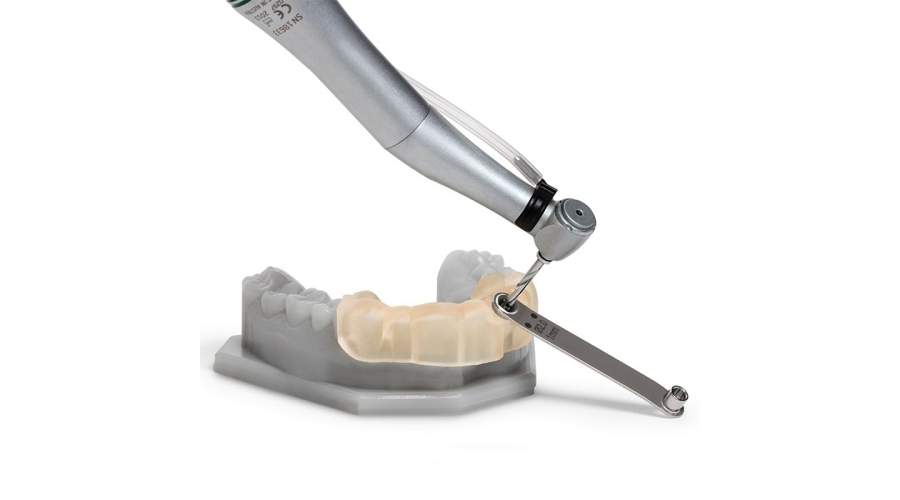Medical application
3D printing teeth and bone repair technology has matured and is rapidly spreading in many orthopedic hospitals and stomatological hospitals. 3D printing of cells, soft tissue, organs and other technologies are still in the exploration and development stage.
The authoritative report of professional institutions shows that the average annual growth rate of the 3D printing market in the past three years is 27.4%. It is expected that the 3D printing market will reach US$6 billion in 2019. Among them, the market share in medical applications accounted for 15.1%, and the market is expected to reach $1.9 billion in 2025.

Currently, 3D printing medical device R&D and manufacturing is booming globally and the market prospect is infinite." A researcher at CIC Consulting said that in developed countries, 3D printed medical devices have been widely used in certain fields, such as the United States. More than 2 million people now use 3D printed prostheses. 3D dentures, 3D hearing aids, 3D artificial joints, etc. are also being promoted and applied in developed countries in Europe and America. In the future, in the research and development, production and application of medical devices, 3D printing technology will become the core technology for the industry to explore.
According to the researcher, in recent years, the average growth rate of China's medical device industry is over 20%. In the next 10 years, China's medical device industry will continue to maintain rapid growth. In such a good development environment, 3D printing medical devices will be well developed, and the scale and industrialization process is expected to be shortened. It is not impossible to surpass the technological advantages of Western developed countries in this field. As China attaches more importance to and investment in 3D printed medical devices, 3D printed medical device technology will become more and more mature, its application range will become wider and wider, its market prospects are immeasurable, or it will promote the overall medical device market. Changes in the pattern.

Initiating a technological revolution
3D printing technology is expected to lead the technological revolution in biomedical science

For the application of 3D printing technology to the medical industry, 3D printing technology has certain advantages in the manufacture of cell culture stents and implantable medical device products. Because each patient's height, weight, and organ size are different, and 3D printing can satisfy individualized applications, 3D technology only takes 10 minutes to print a tooth, while traditional dental implant technology requires at least 3 days; 3D printed hearing aids can be used. The traditional nine processes have been shortened to three steps, namely scanning, molding and printing; patients with 3D printed bones can see bone cells have grown into the pores of the printed bones in a short period of time... It is said that 3D printing is triggering a technological revolution in the development and manufacture of medical devices.
At present, the application of 3D printing in the field of medical devices mainly includes: external medical devices, such as medical models, prosthetics, dental surgical templates, etc.; personalized implants, such as skull repair, cervical artificial vertebral body and artificial joints; conventional implantation Things, such as surface modification of the joint shank, implants, patches, etc.; add cells to 3D to print human organs.

“Reproduction of human body parts is a highly customized product. Through 3D printing, these parts can be completely integrated with the body and integrated into the body. Taking bones as an example, when a certain bone of the human body needs to be replaced, it can be scanned symmetrically. The skeleton, and then print out the corresponding bones, and finally implanted into the human body through surgery." Liu Zhongjun, director of the Department of Orthopaedics, Peking University Third Hospital, said that his team has developed dozens of 3D in the field of spine and joint surgery. Print a spinal surgical implant. Compared to traditional technology, 3D printed bones have two major advantages. One is the bone that wants to do what shape; the other is that the implant has pores that allow the bone to grow in. They can attract the surrounding bone like a sponge, making the knot between the real bone and the fake bone. It is a solid one, so that the patient's bones can recover as soon as possible; some medical experts have successfully customized the surgical instruments according to their respective professions and needs through 3D printing technology, so that they can better implement superb surgical treatment.
3D printing combined with modern biomedical technology enables bionic simulation and personalized manufacturing, especially the production of living human tissues and organs, and becomes a key technology supporting the disruptive changes in biomaterial science and industry.
